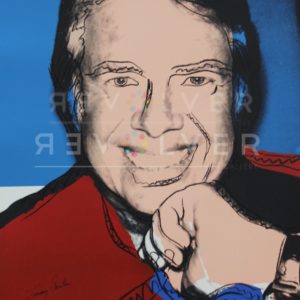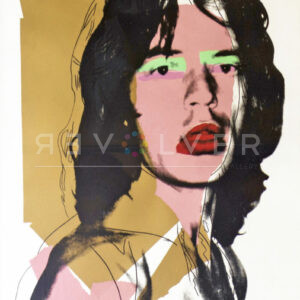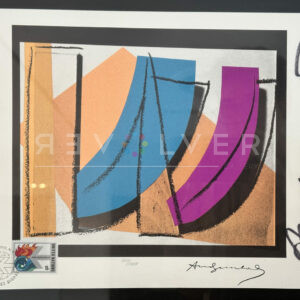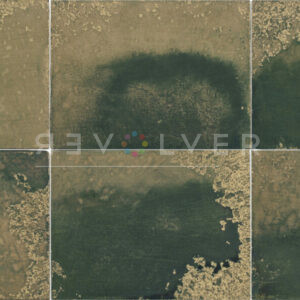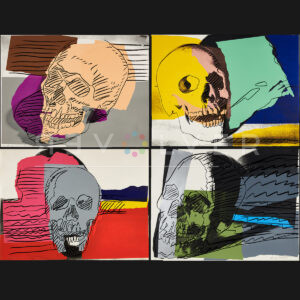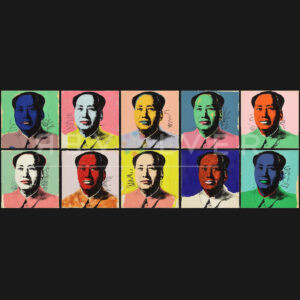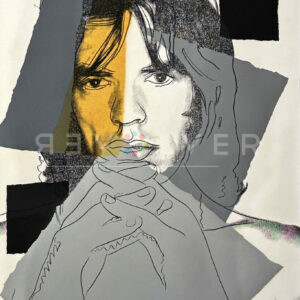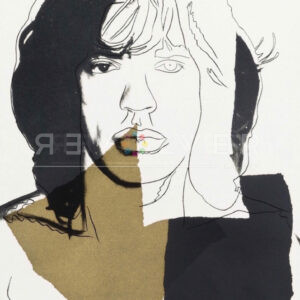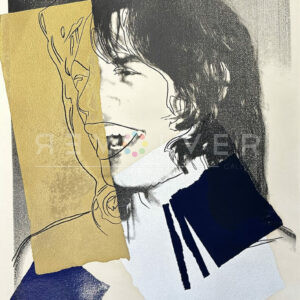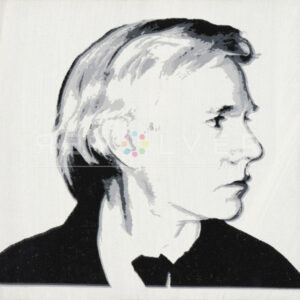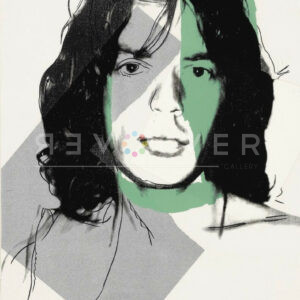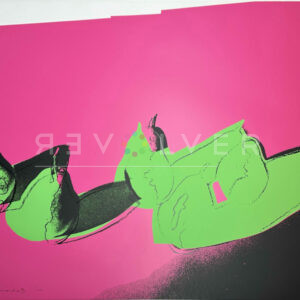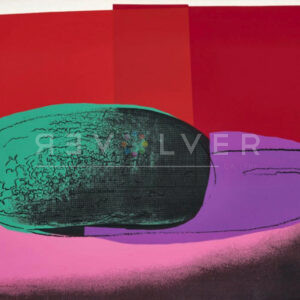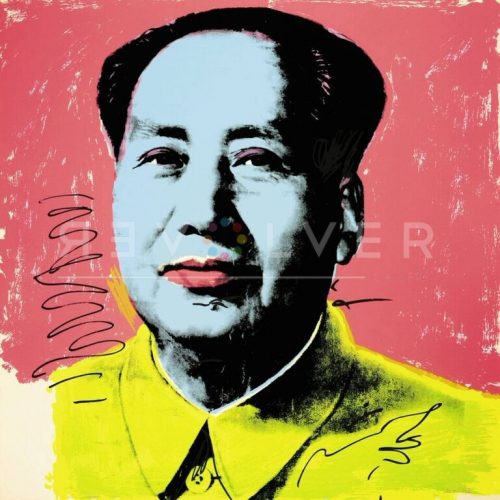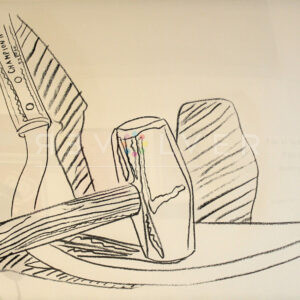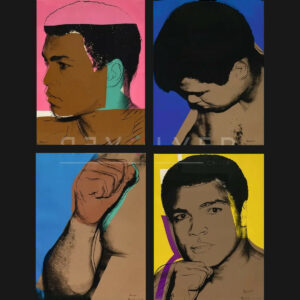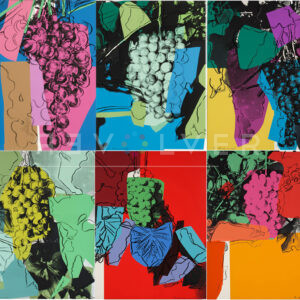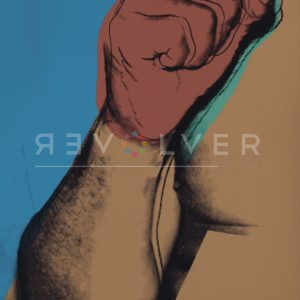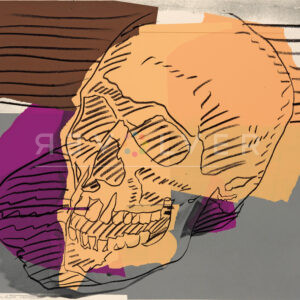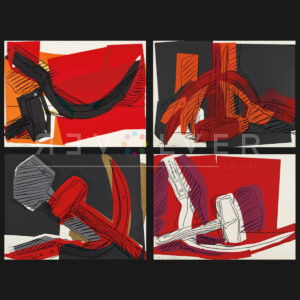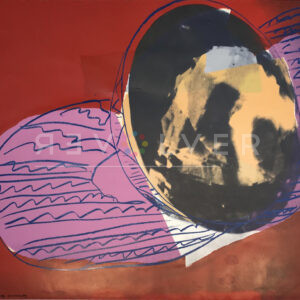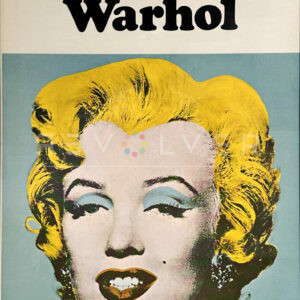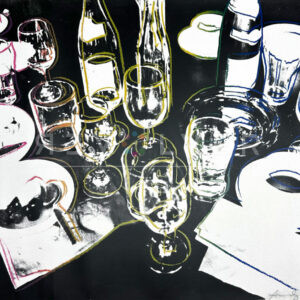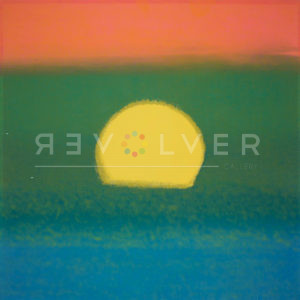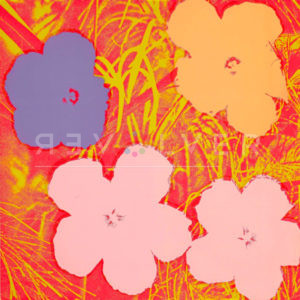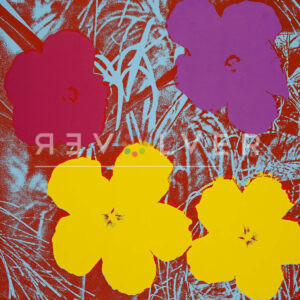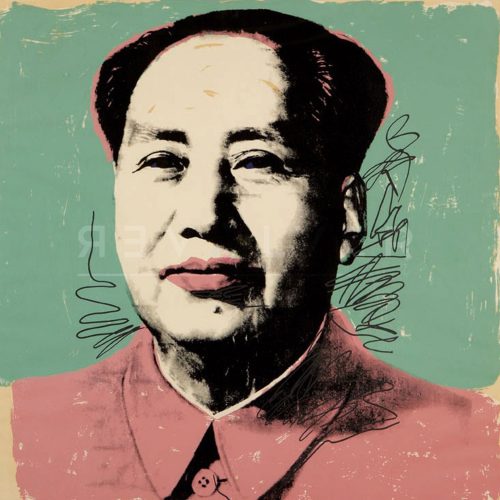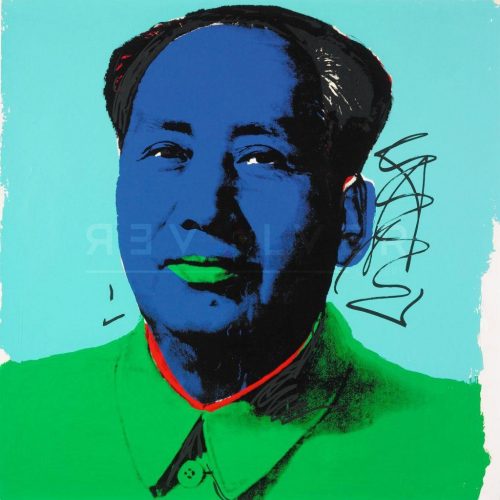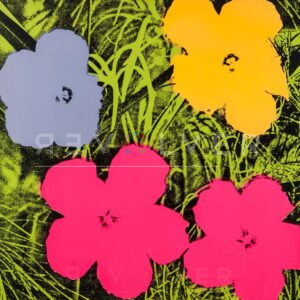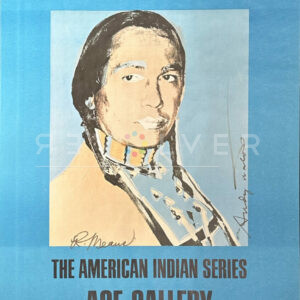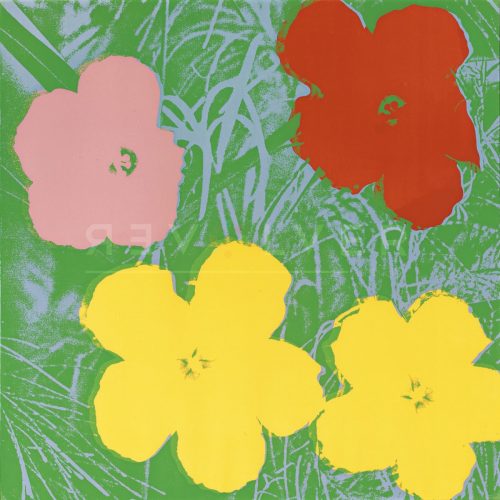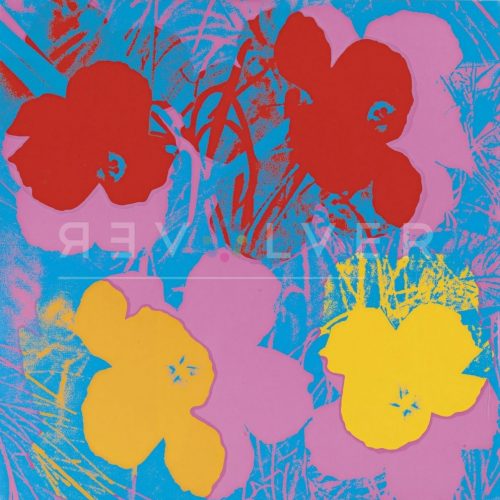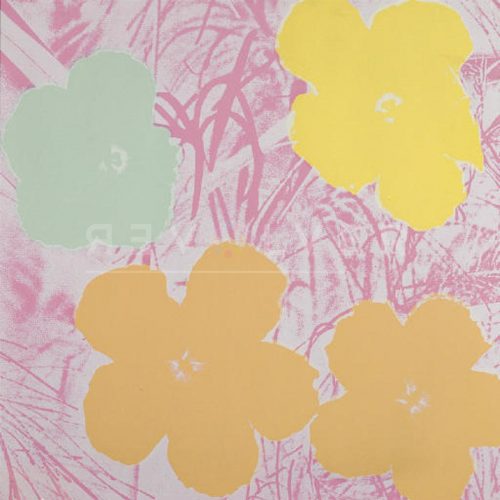Andy Warhol 1970s
Home ▸ All Artworks ▸ Andy Warhol 1970s
Compared to the wild Factory days of the 1960s, the ’70s were a much quieter decade for Andy Warhol. On June 3rd, 1968, Valerie Solanas attempted to assassinate Warhol in his office, and the near-death experience seemed to alter both his focus and mindset. The shooting left considerable physical and emotional scars, spurring his fear of hospitals and an influx of violent imagery in his works, like guns. He focused less on growing his social circle and more on business and entrepreneurialism, establishing new patrons for portrait commissions with celebrities like Mick Jagger, John Lennon, Diana Ross, Muhammad Ali, Brigitte Bardot, and more. Warhol published one of his most famous series, Mao, in 1973.
He expanded his brand on a global scale, exhibiting his Rain Machine installation at the 1970 World Expo in Osaka, Japan. He co-founded Interview magazine with Gerard Malanga, a magazine dedicated to film, fashion, and popular culture, and published his popular eccentric memoir in 1975 titled The Philosophy of Andy Warhol: From A to B and Back Again. He opened the New York Academy of Art in 1979 alongside his friend and art collector Stuart Pivar.
With a knack for collecting objects, Warhol started a series of Time Capsules in 1974. He stored everything he deemed worthy into cardboard boxes: fan-mail, newspaper clippings, children’s books, record albums, and photo booth photographs. And, on the more grotesque end, fingernails, dead ants, used condoms, 175 cookie jars, a mummified foot, and a tube of gallstones. He filled over 600 boxes in total, each one documenting a specific phase or moment in his life.
While parties at The Factory dried up, Warhol still frequented nightspots in New York City like Max’s Kansas City and Studio 54. He was generally regarded as a shy, meticulous observer who often stood to the side, yet always managed to show up for the action. The artist once stated, “I will go to the opening of anything, including a toilet seat.”

